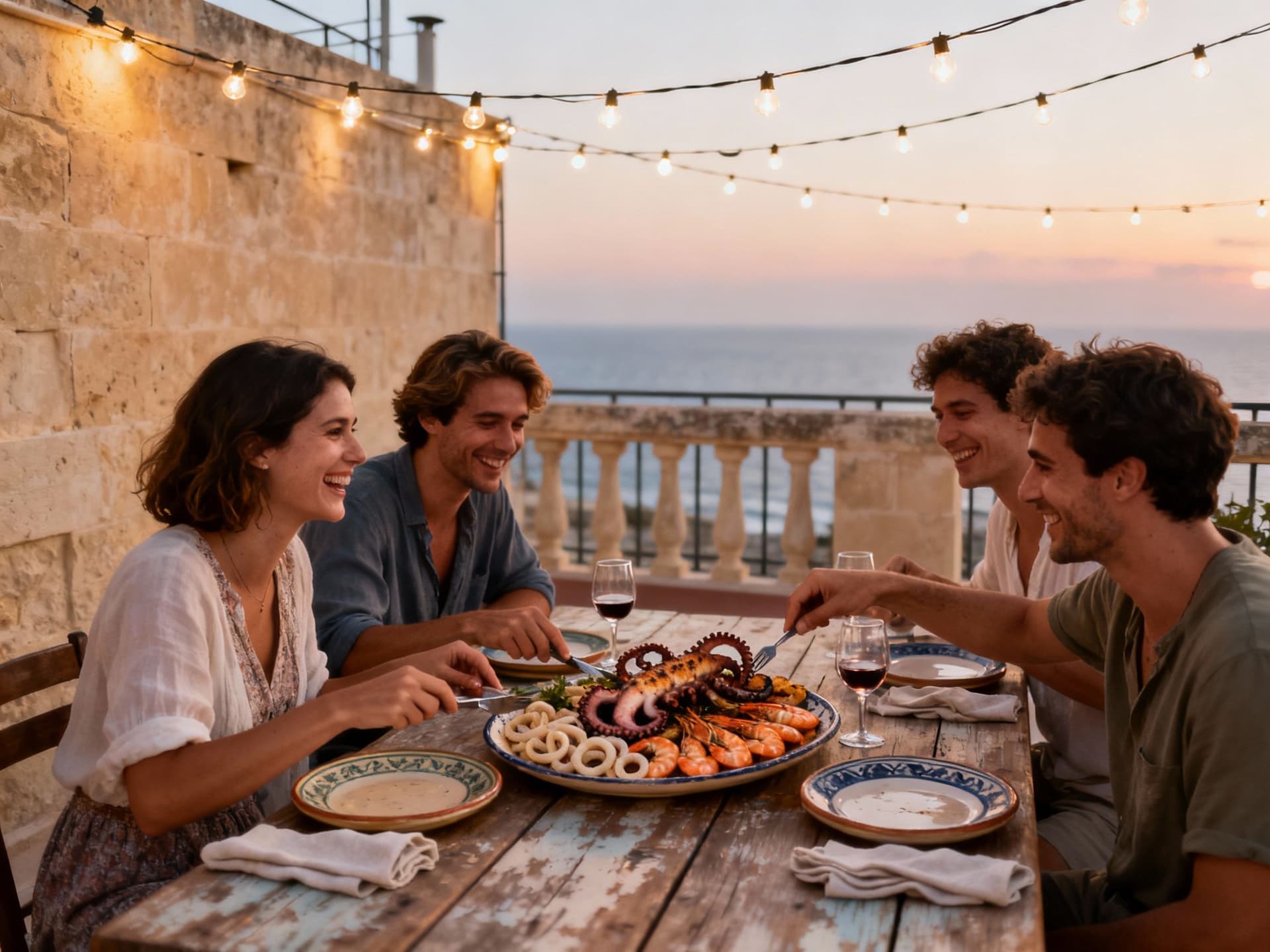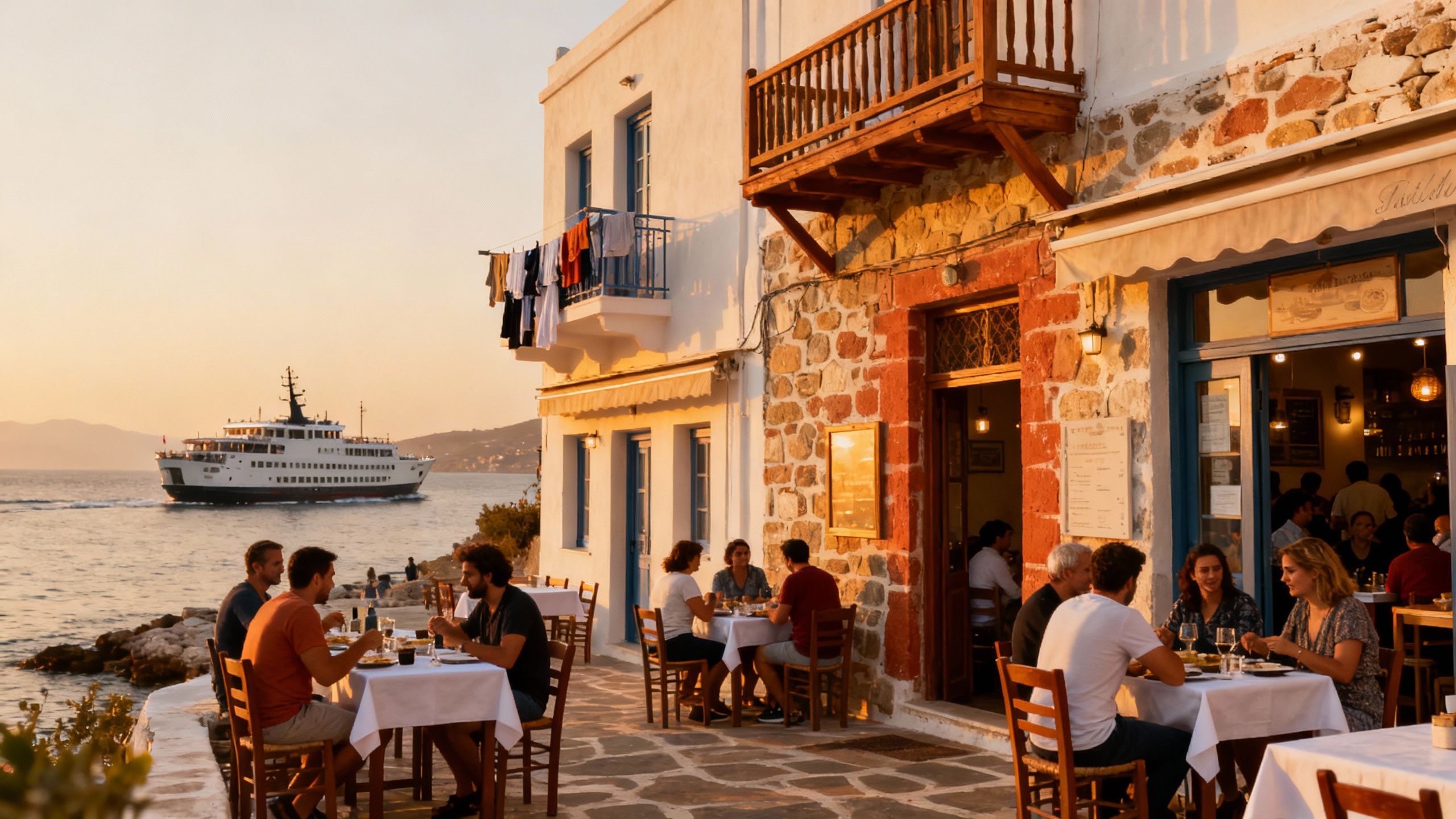Malta: Lanes, Sea and Sensible Buys
Malta’s compact Mediterranean life seduces buyers — pair neighbourhood rhythms with local market data and legal checks to buy a home that truly fits your life.
Imagine stepping out at dawn onto a limestone street in Valletta, the smell of fresh ftira from a corner bakery mixing with salt from the harbour. In Malta, daily life folds historic stone, lively neighbourhood cafés and short sea-breezed walks into a compact island rhythm that feels lived‑in rather than staged. For many international buyers that compactness is the appeal: everything is near, from cultural venues to everyday services, and that closeness shapes what to look for in property. Yet behind the romance, Malta’s housing market has been quietly moving—buyers who love the life need practical signals to match the feeling with sound purchases.
Living the Malta lifestyle

Malta is a collage of lanes, coastal promenades and small piazzas where neighbourhood life happens outdoors. Mornings mean espresso at local bars, afternoons are for swimming coves or museum visits, and evenings gather over seafood in Marsaxlokk or chic bistros in Sliema. The island’s compact size makes weekend escapes to Gozo simple, and English as an official language flattens many day‑to‑day hurdles for buyers used to international living. These rhythms influence what people buy: terraces and bay views matter, but so do proximity to services and community texture.
Valletta & the Three Cities: history on your doorstep
Valletta’s grid of baroque streets gives a daily dose of history — theatres, narrow cafés and fortified harbours become your living room. The Three Cities (Cospicua, Vittoriosa, Senglea) across the Grand Harbour offer calmer streets, restored townhouses and strong marina culture for boat owners. If you want to be part of Malta’s cultural heart, look for properties on Merchant Street and Old Theatre Street in Valletta or a restored waterfront maisonette in Vittoriosa where local festivals animate the quay. Those choices trade privacy for constant cultural contact; valuation and resale depend on how well a property has been renovated for modern living while respecting heritage norms.
Sliema & St Julian’s: sea promenades and social life
Sliema and St Julian’s are where expat social life and seafront living converge: promenades, rooftop bars and modern apartments dominate. Choose a seafront flat on Tower Road for daily swims and walkable cafés, or an inland penthouse for quieter streets and better value. Bear in mind that prime waterfront areas command higher per‑square‑metre pricing, concentrated in the Northern Harbour region where demand is persistent. If nightlife and rental flexibility matter, apartments around Paceville and Spinola Bay convert easily between holiday and long‑term lets, but they bring seasonal noise that some buyers dislike.
- Lifestyle highlights: cafés, coves and quiet discoveries - Morning espresso at Café Jubilee in Valletta and a late afternoon swim at St George's Bay. - Sunday fish market in Marsaxlokk followed by a seaside lunch on the quay. - Coastal walks from Sliema to St. Julian’s with dotted terraces and hidden plunge pools. - Weeknight theatre or concert in Valletta’s Manoel Theatre or outdoor summer festivals. - Village festas in small towns — noisy, colourful and a shortcut into local social life.
Making the move: practical considerations

Malta’s lifestyle appeal sits next to shifting policy and market signals — for instance, the European Court of Justice decision in 2025 removed Malta’s citizenship‑by‑investment route, changing one channel of foreign demand and the profile of buyers. More tangibly, official data shows property prices have continued upward movement, so timing and location selection now balance lifestyle with realistic liquidity expectations. Understanding recent market trends and policy shifts helps buyers avoid overpriced nostalgia purchases and instead pair daily life priorities with long‑term value.
Property styles that fit island living
From terraced townhouses and restored maisonettes to new‑build apartments, Malta’s stock is varied and often idiosyncratic. Townhouses in older cores usually require careful renovation for insulation, plumbing and modern kitchens, while many new developments in Sliema and Pembroke come with parking and communal amenities but less character. Think about daily use: a sunny terrace or roof deck extends living space more than a second bedroom does in Malta’s climate. Match property type to how you will live — entertaining on a terrace, commuting to a coworking hub, or renting seasonally.
How local experts make the lifestyle real
- Work with agencies and specialists who understand local micro‑markets and lifestyle trade‑offs. 1) Ask agents for recent comparable sales (deeds and promise-of-sale records) rather than advertised prices. 2) Use architects or surveyors familiar with Maltese limestone buildings to estimate renovation costs. 3) Verify planning and conservation restrictions for heritage zones before bidding. 4) Discuss rental licensing and short‑let restrictions if you plan to let seasonally. 5) Seek advice on utility connections and municipal rates that vary by locality.
Insider knowledge: what expats wish they'd known
Expats often arrive enchanted and learn practical lessons fast: renovation timelines expand, summer noise and traffic affect lifestyle choices, and community integration rewards patience. Recent industry surveys point to resilient demand for residential property, but they also show buyers underestimating ongoing maintenance costs in older properties. Local customs — from the centrality of festas to the social role of the local bar — will determine where you feel at home faster than a glossy listing ever will.
Language, culture and making community
English is widely spoken, which flattens initial integration, but learning Maltese opens doors to deeper neighbourhood ties and festa networks. Locals value directness and hospitality; showing up at a weekly market or local association meeting often yields stronger connections than online forums. If you want to blend in, prioritise a neighbourhood with daily social touchpoints: a bar where the same group meets, a parish church at the centre, or a community garden where residents gather.
Longer-term lifestyle & value signals
Look beyond headlines: neighbourhoods with steady municipal investment, improved transport links and conservation-led regeneration tend to retain value. Areas such as Pembroke and Gzira show a mix of new development and good services, while Gozo offers slower‑paced long‑term lifestyle value for buyers prioritising space. Recent market commentary highlights continued price pressure in the Northern Harbour areas, so weigh lifestyle against liquidity — if resale matters, favour proven demand corridors.
- Red flags and quick checks before you bid - Missing or unclear title documentation or building permits. - Properties in conservation zones with restricted renovation rights. - Poor insulation or damp in older limestone houses without recent surveys. - Listings that promise ‘holiday rental income’ without licensing proof. - Unusually low maintenance fees listed for sea‑front blocks that likely need special upkeep.
- A simple 5-step checklist to align lifestyle and purchase 1) Visit neighborhoods at different times (weekday morning, Sunday evening, and summer peak). 2) Commission a local surveyor for structural and services checks. 3) Obtain comparable deed-based sale prices from recent months. 4) Confirm planning/conservation restrictions with the Planning Authority. 5) Talk with at least two agents and one local resident about daily life and hidden costs.
Malta can feel like a long European summer lived in micro‑scale: neighbourhoods are intimate, the sea is never far, and community rituals matter. Pair that romance with disciplined local due diligence—title checks, conservation rules, renovation budgets—and you arrive at a purchase that supports the life you imagined. When you’re ready, work with specialist agencies and local advisors who can translate the island’s daily textures into practical checks and realistic valuations so your move feels less like a leap and more like coming home.
Danish relocation specialist who has lived in Barcelona since 2016. Helps families move abroad with onboarding, schooling, and local services.


